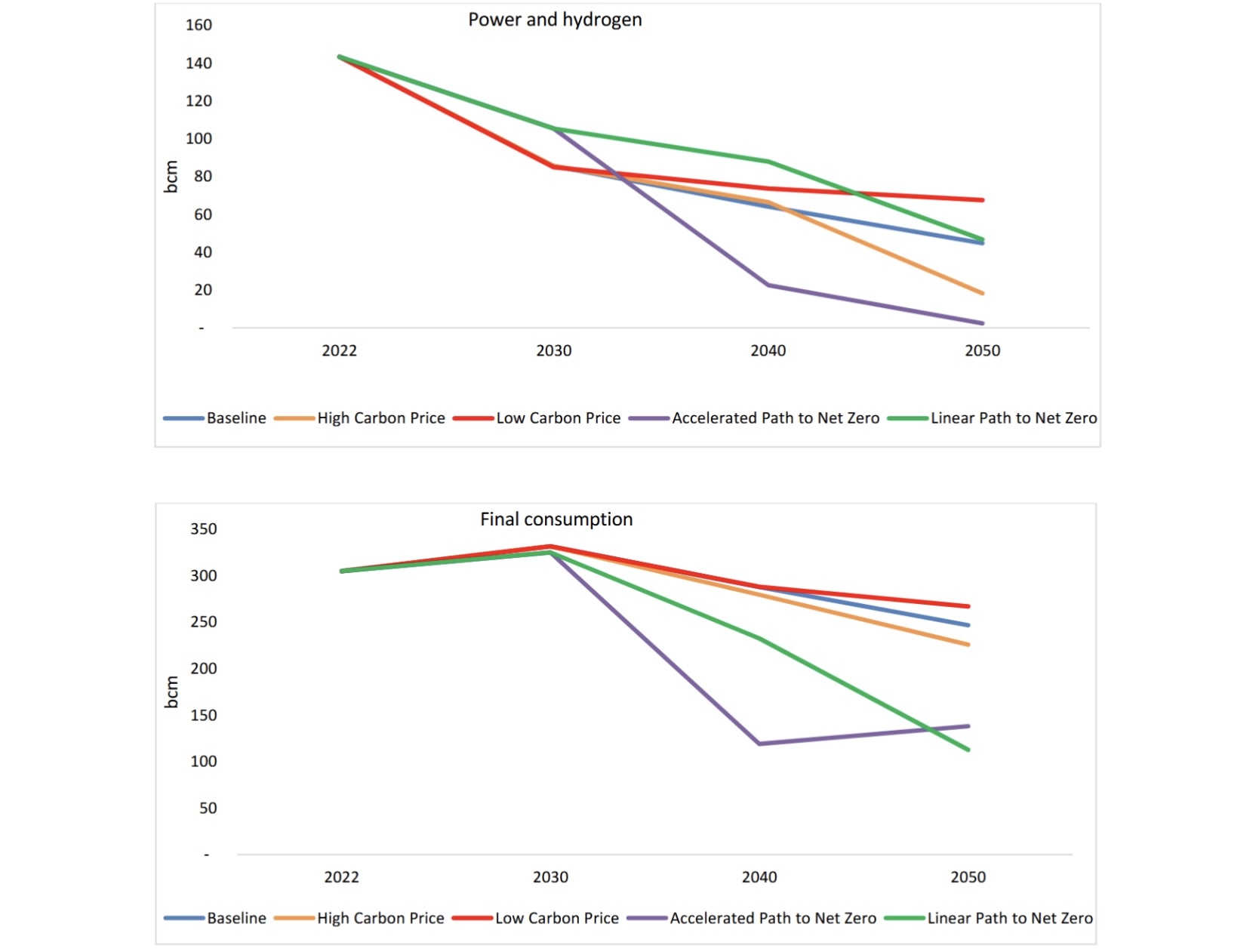Based on the scenarios described in the article "What does decarbonisation cost - model results!", the question arises as to how these CO2eq reduction pathways are likely to affect natural gas consumption in the EU(27), UK, Norway and Switzerland. In addition, there is the question of the consequences for the envisaged plans for gas network decommissioning, natural gas storage management, hydrogen ramp-up, the rededication of natural gas pipelines to hydrogen pipelines and the carbon capture and storage infrastructure.
The graphs below, both taken from the report "Decarbonisation in Europe: Modelling Economic Feasibility and the Glidepath for Gas" prepared by OIES, Dr Kong Chyong, show the projected natural gas consumption in the electricity generation plus hydrogen production via steam reforming (top slide) and end-use sectors (bottom slide).
It can be seen that in no scenario, not even in the "Accelerated Path to Net Zero" scenario, is total consumption in 2050 below 141 billion Nm3 - although this value is already achieved in 2040 in the aforementioned scenario. Based on the fact that the technologies required to achieve the "Accelerated Path to Net Zero" will probably not be available in time or to the full extent - not to mention the very high costs - total consumption in the countries mentioned is more likely to be around 300 billion Nm3 in 2040 and > 150 billion Nm3 in 2050.

This means that decommissioning the gas grid will be a challenge even at grid level 3 as end customer consumption will still be high - if the forecasts materialise. With regard to natural gas storage facilities, it can be said that they will continue to be needed to a large extent - especially those storage facilities that have a cross-border effect - to ensure the security of natural gas supply and that the conversion of natural gas storage facilities into H2 storage facilities would be slow - the new construction of small, fast, H2 storage facilities will probably be accelerated.
This means that the hydrogen economy will slowly evolve from a local, regional and national level to an international hydrogen economy. In other words, the "H2 big bang" required for the conversion of large import pipelines from natural gas to H2 is unlikely to materialise. In order to achieve a significant reduction in CO2eq emissions despite the predicted high natural gas consumption, a functioning CCS infrastructure would be required. However, this is still in its infancy and is not even included in the first ÖNIP, which has already been criticised several times here. In order to make real progress towards achieving the Net Zero Plan, a solid, cross-sectoral planning basis, including realistic milestones and - last but not least - sufficient financial resources are required.
